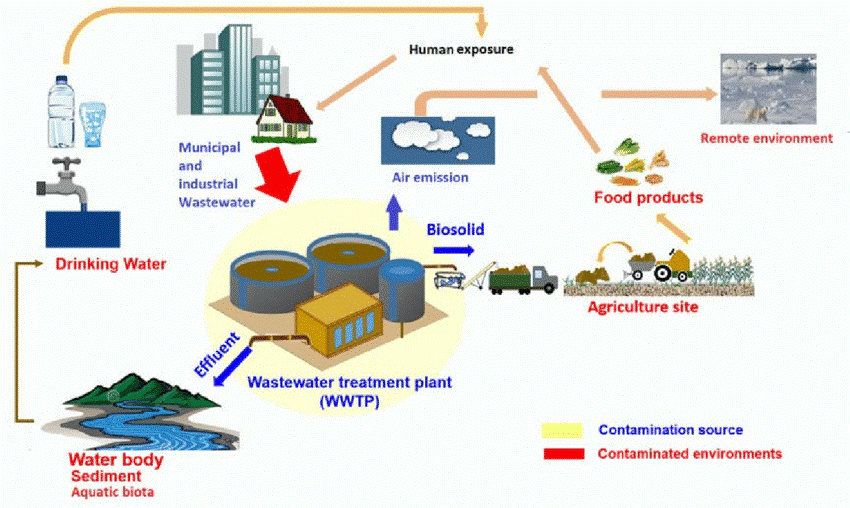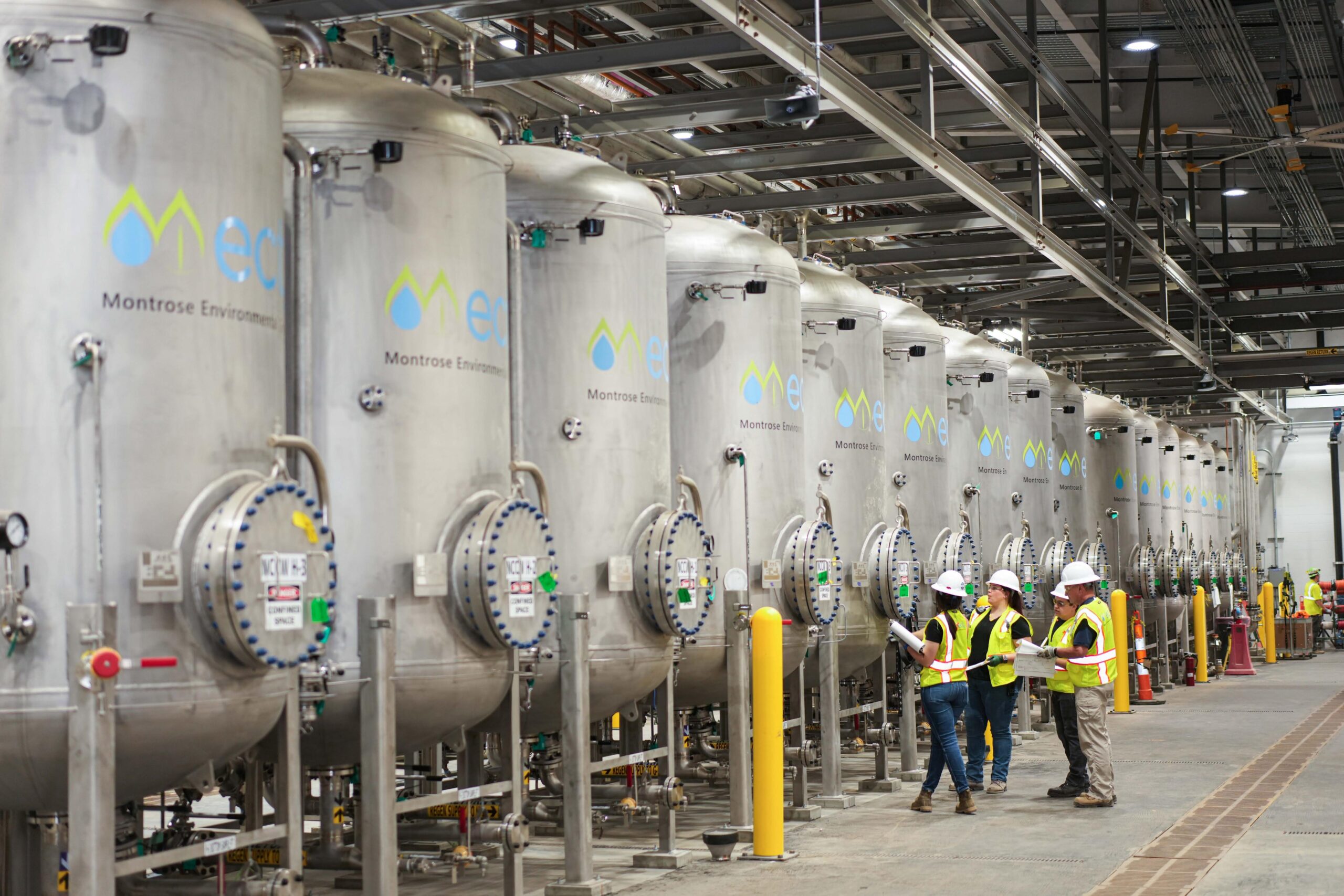Your Guide to PFAS Treatment Technologies and Conveniences
The frequency of PFAS contamination in water sources necessitates an extensive understanding of offered treatment innovations. Various approaches, such as triggered carbon filtration, ion exchange systems, and progressed oxidation processes, existing distinct benefits in attending to these persistent pollutants. Each modern technology not just targets details PFAS substances yet likewise plays a critical function in enhancing overall water top quality and safeguarding environmental honesty. As communities come to grips with the effects of PFAS direct exposure, the selection of a proper therapy approach ends up being increasingly vital, prompting a better examination of these modern technologies and their corresponding benefits.
Recognizing PFAS Contamination
Recognizing PFAS contamination is important for addressing its prevalent influence on environmental and human health and wellness (m270 pfas treatment). Per- and polyfluoroalkyl materials (PFAS) are a team of artificial chemicals extensively made use of in numerous commercial and customer items as a result of their water- and grease-resistant homes. Frequently discovered in firefighting foams, non-stick cooking equipment, and water-repellent textiles, PFAS have actually gotten in the setting via production procedures, wastewater discharges, and seeping from land fills
As soon as released, these compounds linger in the environment, causing extensive contamination of dirt and water sources. Their special chemical framework, defined by strong carbon-fluorine bonds, provides them immune to destruction, causing a sensation called "forever chemicals." PFAS can accumulate in the human body and the food chain, possibly creating negative health and wellness impacts, consisting of immune system interruption, developmental issues, and an increased danger of specific cancers cells.
Governing agencies and health and wellness companies are progressively acknowledging the relevance of PFAS contamination, prompting initiatives to keep an eye on, assess, and mitigate its results. Comprehending the paths of PFAS contamination is necessary for notifying public law and developing effective approaches to shield both ecological and human health.
Introduction of Treatment Technologies
Different therapy modern technologies have been developed to resolve the difficulties presented by PFAS contamination in water and soil. These innovations can be broadly categorized into several categories, each with its distinct devices and efficiency in getting rid of PFAS compounds.
One popular method is ion exchange, which uses resin materials to capture and remove PFAS from contaminated water. Another technology, advanced oxidation procedures (AOPs), uses solid oxidants and ultraviolet light to damage down PFAS right into much less harmful substances.

Turned On Carbon Filtration
Triggered carbon purification is an extensively utilized technique for the elimination of PFAS from polluted water, known for its capacity to adsorb a wide range of natural substances. This technology employs turned on carbon, a very permeable material with a considerable surface location, which promotes the binding of PFAS particles with physical adsorption. The efficiency of triggered carbon in Get More Info eliminating PFAS is influenced by several elements, including the kind of carbon made use of, the call time, and the focus of PFAS in the water.
Among the advantages of triggered carbon filtration is its flexibility; it can be carried out in different setups, such as granular triggered carbon (GAC) systems or powdered triggered carbon (PAC) systems. GAC systems are normally utilized in larger-scale applications, while special-interest group can be used in smaller sized or temporary arrangements. The modern technology is relatively simple to operate and maintain, making it available for lots of water therapy centers.

Ion Exchange Equipment
Ion exchange systems represent an additional effective approach for the removal of PFAS from infected water, enhancing methods like triggered carbon filtration. These systems operate on the principle of exchanging ions in the water with ions held on a resin product. Ion exchange resins can be specifically formulated to target the adversely billed PFAS compounds, successfully capturing them and allowing cleaner water to go through.
One of the key benefits of ion exchange systems is their capacity to remove a wide variety of PFAS, including both long-chain and short-chain variations. This flexibility makes them ideal for different applications, varying from local water therapy to commercial procedures. Furthermore, ion exchange systems can usually attain reduced detection limits for PFAS contrasted to some other treatment approaches, hence enhancing water high quality.
Nonetheless, it is vital to keep an eye on and take care of the regeneration of ion exchange media, as the performance can decline gradually as a result of saturation. Proper maintenance and replacement of the resin are vital for maintaining the system's effectiveness. Generally, ion exchange systems give a trustworthy and efficient option for PFAS elimination, adding considerably to secure drinking water requirements and environmental management.
Advanced Oxidation Processes
Advanced Oxidation Processes (AOPs) utilize effective oxidants to properly degrade PFAS compounds in infected water. These innovative therapy methods produce highly reactive varieties, such as hydroxyl radicals, that can break down complicated PFAS particles right into less hazardous by-products. m270 pfas treatment. AOPs commonly employ combinations of ultraviolet (UV) light, ozone, hydrogen peroxide, or Fenton's reagent, improving the oxidation capacity and boosting destruction performance
The main advantage of AOPs hinges on their ability to target a broad variety of PFAS substances, imp source including both long-chain and short-chain variants. This versatility is essential, as PFAS contamination frequently entails combinations of various compounds with varying chemical frameworks. AOPs can be incorporated into existing water treatment systems, making them a practical solution for lots of communities and industries.
Nonetheless, the execution of AOPs can be resource-intensive, needing careful factor to consider of functional costs and power intake. Additionally, while AOPs work in damaging down PFAS, they might not completely get rid of all byproducts, necessitating further therapy actions - m270 pfas treatment. On the whole, AOPs stand for an encouraging opportunity for attending to PFAS contamination, adding to cleaner water resources and improved public health and wellness security

Verdict
To conclude, dealing with PFAS contamination calls for an extensive understanding of offered therapy innovations. Activated carbon filtration, ion exchange systems, and progressed oxidation processes each present one-of-a-kind benefits for efficiently removing these unsafe substances from water sources. By selecting the ideal modern technology, neighborhoods can improve water quality, protect public wellness, and alleviate the environmental risks linked with PFAS direct exposure. Continued study and application of these methods are necessary for efficient management site here of PFAS contamination in influenced locations.